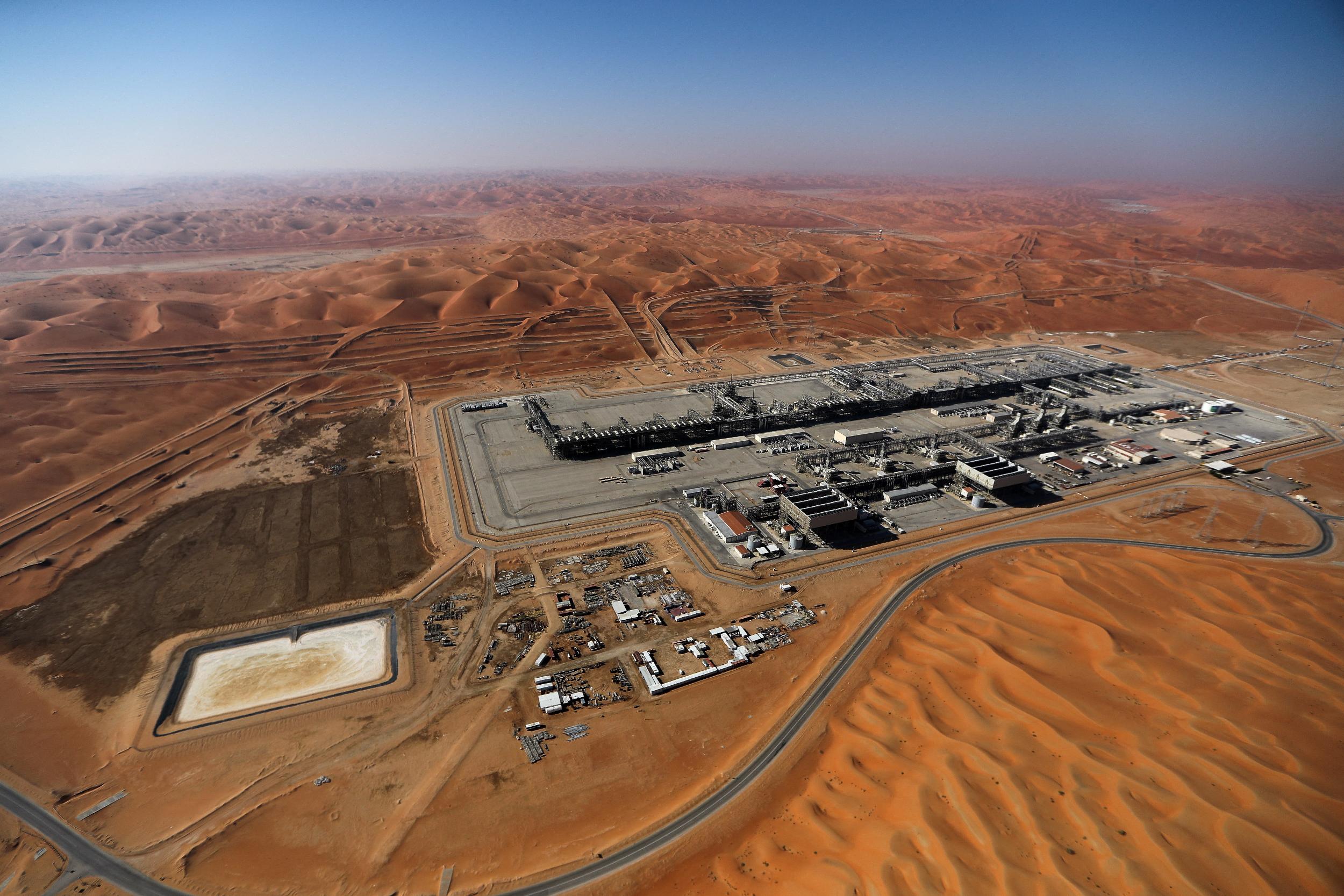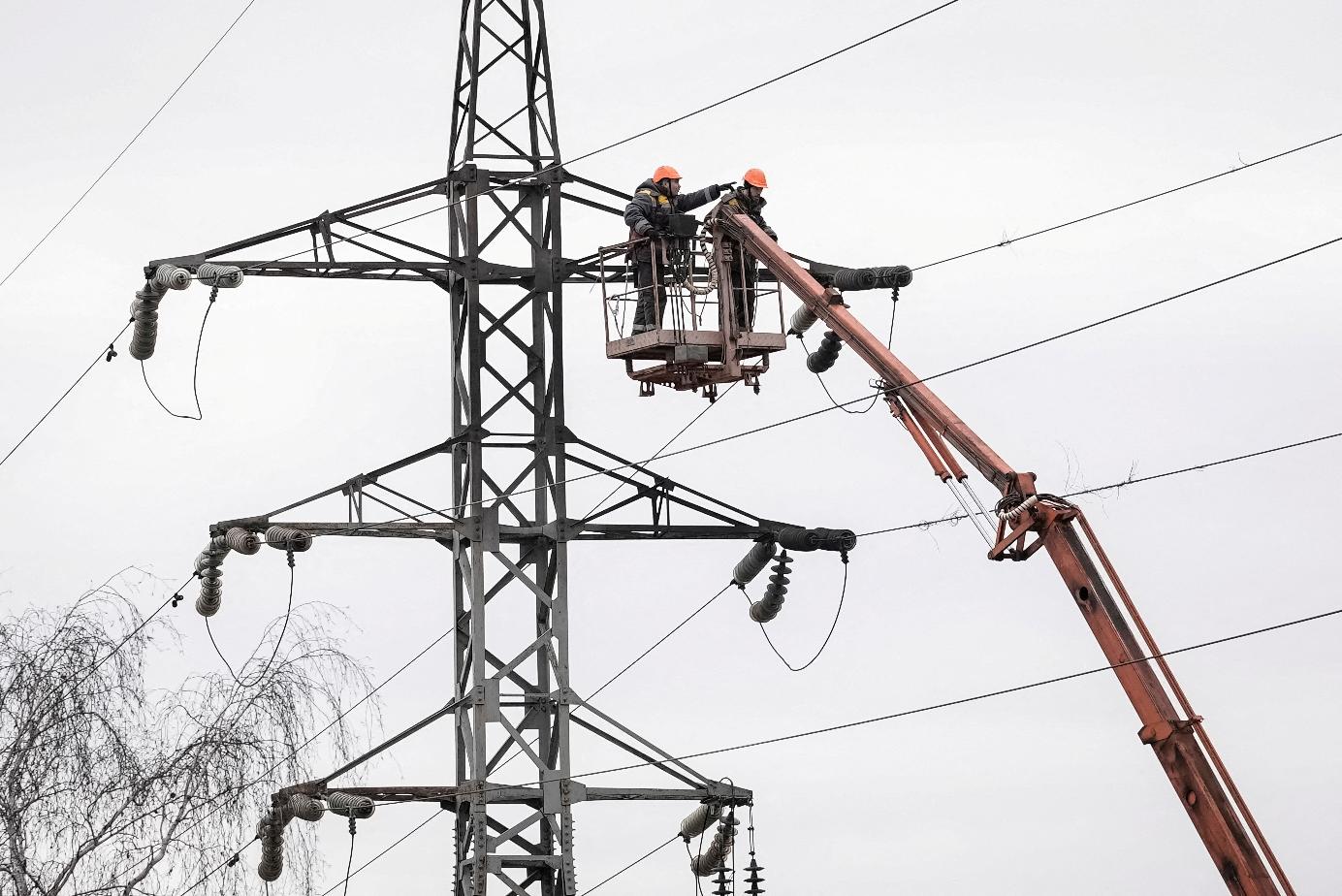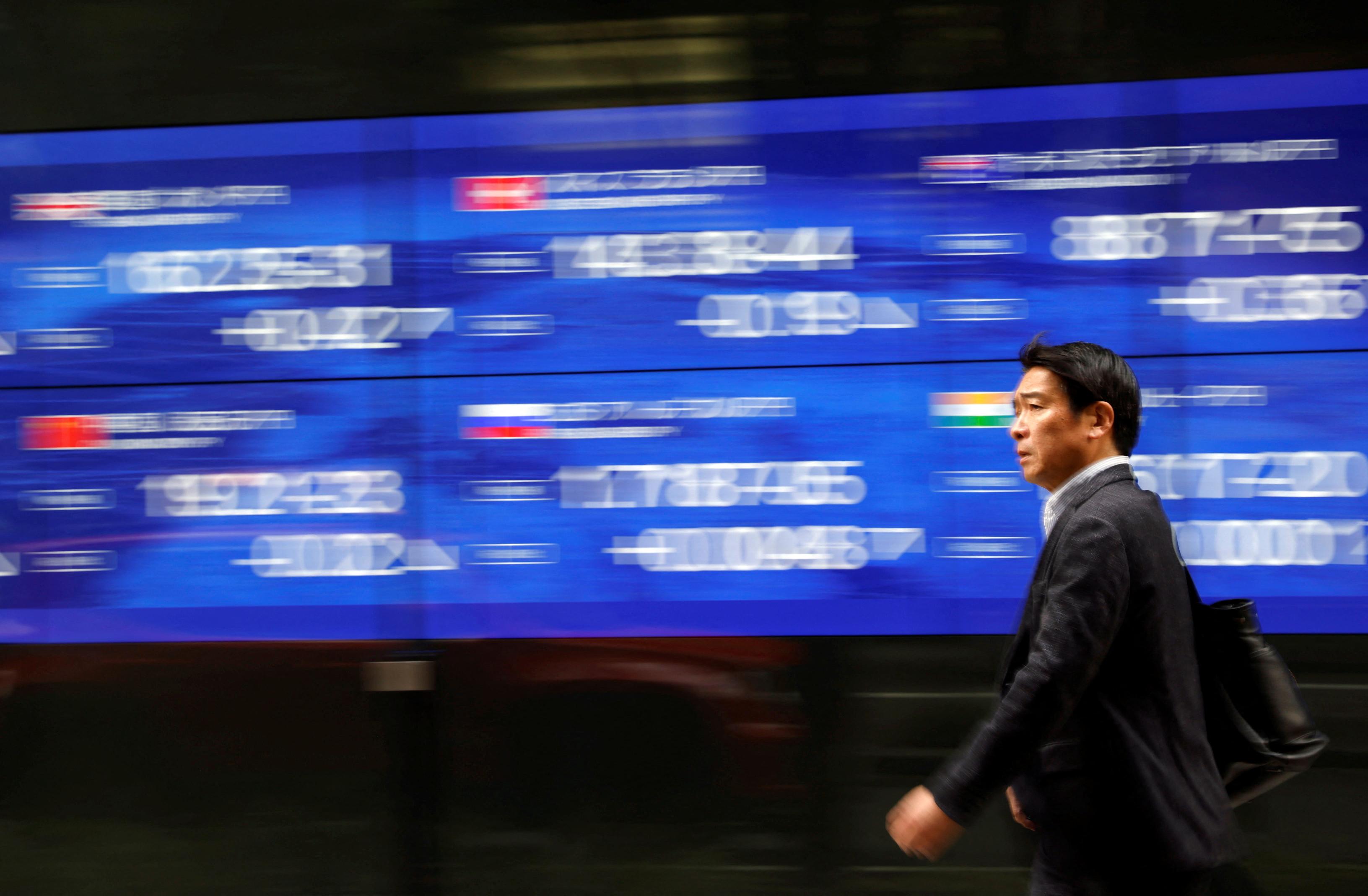
2024-09-19 09:18
Sept 19 (Reuters) - Saudi Arabia's crude oil exports in July fell to their lowest level in nearly a year, data from the Joint Organizations Data Initiative (JODI) showed on Thursday. The country's oil exports stood at 5.741 million barrels per day (bpd) in July, their lowest level since August 2023. Saudi Arabia is world's largest exporter of crude. OPEC+ oil producers earlier this month agreed to delay a planned production increase for October and November and said they could further pause or reverse the hikes if needed. Saudi's crude exports in July fell by about 5.1% from June's exports of 6.047 million bpd. At the same time, Saudi's production rose to 8.941 million bpd from 8.830 million bpd. However, Saudi refineries' crude throughput fell by 0.026 million bpd to 2.397 million bpd, the data showed, while direct crude burning increased by 211,000 bpd to 769,000 bpd. Riyadh and other members of OPEC provide monthly export figures to JODI which publishes them on its website. Saudi cut its October price for flagship Arab light crude to Asia to the lowest level in nearly three years on concerns of weak demand in the region. This month, both the Organization of Petroleum Exporting Countries (OPEC) and the International Energy Agency (IEA) lowered their 2024 oil demand growth forecasts. Concerns about Chinese demand have weighed on the outlook. China's oil refinery output in August fell 6.2% from a year earlier, official data showed, declining for the fifth month. Sign up here. https://www.reuters.com/business/energy/saudi-arabias-crude-oil-exports-july-hit-almost-one-year-low-2024-09-19/

2024-09-19 09:08
Rates to stay on hold until year-end, may cut in Q1 2025 Says restrictive policy needed to contain inflation Currency rallies OSLO, Sept 19 (Reuters) - Norway's central bank held its policy interest rate unchanged at a 16-year high of 4.50% on Thursday, as widely expected, and said any cuts must wait until the first quarter of next year, boosting the crown currency. "The committee judges that a restrictive monetary policy is still needed to bring inflation down to target within a reasonable time horizon," the central bank said in a statement. Economists have been divided over when Norges Bank might begin to ease policy, with a majority of those polled by Reuters predicting a cut in December this year, while a minority pointed to March of 2025 as the most likely timing. "The policy rate forecast in this report implies that the policy rate will remain at 4.5% to the end of 2024 before being gradually reduced from the first quarter of 2025," the bank said. The Norwegian crown strengthened to 11.67 against the euro at 0855 GMT, from 11.78 just before the announcement. Norges Bank's decision contrasts with recent decisions by other central banks. The U.S. Federal Reserve on Wednesday kicked off an anticipated series of interest rate cuts with a larger-than-usual half-percentage-point reduction, which came on the heels of recent policy easing by the European Central Bank and others. Economists say the Norwegian central bank in its monetary policy must balance above-target inflation, exacerbated by a falling currency, with a cooling economy that now sees low overall growth. The new rate path was clearly more hawkish than expected, economist Oeystein Doerum at the Confederation of Norwegian Enterprise said. "Much now pointed to earlier interest rate cuts," he added. But the firm line on rates was likely intended to shore up the weak crown, Sparebank 1 economist Elisabeth Holvik said. "This is a signal to the currency market that Norges Bank has realised that they first and foremost must stabilise the currency," she added. Norges Bank in June pushed back its prediction for a policy easing to the early parts of 2025, from September of this year, and said last month rates would stay at the current level "for some time ahead" without specifying how long. "The forecast is little changed from the June report but indicates a slightly faster decline in the policy rate through 2025," the central bank said on Thursday. Norges Bank lowered its economic growth forecasts for 2025, predicting GDP for the non-oil economy would expand next year by 1.1%, below the 1.3% growth seen in June. Meanwhile, core inflation for next year was seen at 3.0%, down from 3.4% seen in June but still above Norges Bank's 2.0% target. Sign up here. https://www.reuters.com/markets/rates-bonds/norway-keeps-rate-hold-says-restrictive-policy-needed-2024-09-19/

2024-09-19 07:03
Russia is targeting Ukraine's energy grid UN report says strikes may violate international law Report focuses on Russian attacks from March to August Moscow says energy facilities are legitimate target KYIV, Sept 19 (Reuters) - Russia's campaign of air strikes on Ukraine's energy grid probably violates international humanitarian law, a U.N. monitoring body said on Thursday, as Ukrainians prepare for the toughest winter since Russia's invasion. Over the course of its invasion, Russia has fired hundreds of missiles and drones at Ukrainian electricity generation, transmission and distribution facilities. The first big wave of strikes hit in the autumn and winter of 2022, a few months after Russia began its full-scale invasion of Ukraine. The strikes have continued throughout the war, though Moscow has markedly stepped up its campaign since March. Each wave of strikes has left Ukrainian cities without power for hours at a time for weeks on end. The U.N. Human Rights Monitoring Mission in Ukraine (HRMMU) focused its report on nine waves of strikes between March and August 2024. "There are reasonable grounds to believe that multiple aspects of the military campaign to damage or destroy Ukraine’s civilian electricity and heat-producing and transmission infrastructure have violated foundational principles of international humanitarian law," the report said. HRMMU said it had visited seven power plants that were damaged or destroyed by attacks, as well as 28 communities affected by the strikes. Kyiv says the targeting of its energy system is a war crime, and the International Criminal court has issued arrest warrants for four Russian officials and military officers for the bombing of civilian power infrastructure. Moscow says power infrastructure is a legitimate military targets and has dismissed the charges against its officials as irrelevant. RISKS The HRMMU said the attacks posed risks to Ukraine's water supply, to sewage and sanitation, to the provision of heating and hot water, to public health, to education and to the wider economy. It highlighted a particular problem in urban areas, where most homes are linked up to centralised heating and hot water systems. The report said that nearly 95% of Kyiv's residents relied on centralised basement heating systems whose output requires electric pumps to reach the upper floors of the building. "Without emergency electricity supply, millions of urban residents could be left without heat," it said. HRMMU cited experts as saying that Ukrainians should expect power outages of between four and 18 hours a day this winter. The report also said that during the summer period of 2024, energy-related issues were the second most common reason that Ukrainians gave for fleeing the country. Sign up here. https://www.reuters.com/world/europe/russian-attacks-ukraine-power-grid-probably-violate-humanitarian-law-says-un-2024-09-19/

2024-09-19 07:03
VIENNA, Sept 19 (Reuters) - The Russian and Western nuclear industries remain dependent on each other, a situation that has shielded Russia from European sanctions, an industry report said on Thursday. Cutting the West's dependence would likely drive up costs, the annual World Nuclear Industry Status Report said. Since Russia's 2022 full-scale invasion of Ukraine, some of the five European Union countries with Russia-designed VVER reactors, which use Russian fuel, have sought alternative fuel sources, particularly U.S. company Westinghouse Electric. Several of those countries, however, stockpiled Russian fuel last year, driving up imports. Some Western companies rely heavily on Russian state company Rosatom's construction of new reactors abroad to sell their parts, the report said. "Interdependence between Russia and its Western partners remains significant," the report said. "With Rosatom implementing all 13 nuclear-power reactor construction sites started outside China over the past five years, providers of parts, e.g. France's Arabelle turbines, do not have any other foreign customer besides Rosatom," it said, referring to a unit of French state power utility EDF. It also cited so-called instrumentation and control technology, often described as the "central nervous system" , opens new tab of a nuclear power plant, supplied by Germany's Siemens Energy (ENR1n.DE) , opens new tab and France's Framatome, majority-owned by EDF. "The close mutual industrial and market interdependencies between the Russian nuclear industry and its Western counterparts at least partially explain European hesitations to impose sanctions on the nuclear sector," the report said. "Efforts to reduce or eliminate Russia dependencies in natural uranium, conversion, and enrichment services will likely increase costs," it added. The report gave an overview of global electricity generation from nuclear power last year, which grew by 2.2% from 2022 to 2,602 net terawatt hours, though its share of commercial gross electricity generation fell slightly to 9.15% from 9.18%. Sign up here. https://www.reuters.com/business/energy/western-russian-nuclear-industries-still-intertwined-report-says-2024-09-19/

2024-09-19 06:27
Bullion rose to record high of $2,599.92 on Wednesday Silver gains over 3% Silver market to remain in deficit over coming years - UBS Platinum, palladium up 2% Sept 19 (Reuters) - Gold prices climbed over 1% on Thursday after hitting a record high in the previous session, as the U.S. Federal Reserve embarked on its rate easing cycle. Spot gold rose 1.1% to $2,586.37 per ounce by 1105 GMT, while U.S. gold futures rose 0.5% to $2,611.50. Spot gold had scaled an all-time high of $2,599.92 on Wednesday. The Fed kicked off an anticipated series of interest rate cuts with a larger-than-usual half-percentage-point reduction, in a move meant to show policymakers' commitment to sustaining a low unemployment rate now that inflation has eased. In addition, Fed policymakers projected the benchmark interest rate would fall by another half of a percentage point by the end of this year, a full percentage point next year, and half of a percentage point in 2026. "The prospect of further rate cuts makes gold attractive and new record prices cannot be ruled out," said Alexander Zumpfe, a precious metals trader at Heraeus Metals Germany. Lower interest rates reduce the opportunity cost of holding bullion, which yields no interest. The $2,600 mark proved too high a hurdle for now given how far and fast gold prices rose in anticipation of the Fed's September cut, said Adrian Ash, director of research at Bullionvault. "There's lots of room for gold’s bull market to keep running as the real returns to cash fall into the election and then into new year 2025." Spot silver rose 3.5% to $31.12 per ounce after hitting its highest level since July in the previous session. "We maintain our view that silver is set to benefit from a rising gold price environment," UBS said in a note. "Our expectation that the silver market will remain in deficit over the coming years implies continuous declines in above-ground inventories, which should help fundamentally underpin prices as well as act as a tailwind for investor interest." Platinum added about 2% to $987.71 and palladium gained 2.1% to $1,084. Sign up here. https://www.reuters.com/markets/commodities/gold-holds-firm-after-feds-bumper-rate-cut-2024-09-19/

2024-09-19 06:27
World stocks push higher after bumper Fed cut Fed move seems to point to soft landing Risk appetite weighs on Treasury bonds Graphic: World FX rates NEW YORK, Sept 19 (Reuters) - Major Wall Street indexes broke record highs after global counterparts booked gains and Treasury yields rose on Thursday as the start of the Federal Reserve's first rate-cutting cycle in more than four years whet investors' risk appetite. With a larger-than-usual move on Wednesday, the U.S. central bank turned the page on more than a year in which borrowing costs were kept at their highest for decades to try to temper inflation. Fed Chair Jerome Powell said he did not see elevated risks of a slowdown, and policymakers projected the benchmark rate would fall again, reflected in a closely-watched tool known as a dot plot. "The jumbo cut appears to have raised the perceived likelihood of a soft landing," said Jonathan Cohn, Head of U.S. Rates Desk Strategy at Nomura, referring to economists' ideal scenario where inflation cools without triggering a recession. This was "supporting a sharp rally in risk assets, even as Powell's rhetoric and the dot plot pushed back on the prospect of additional 50bp cuts," Cohn said adding: "the market will continue to acclimate to the Fed's mixed messaging through tomorrow's light calendar." Megacap tech stocks gained, with Tesla (TSLA.O) , opens new tab, (AAPL.O) , opens new tab and Meta (META.O) , opens new tab posting solid gains. The tech-heavy Nasdaq Composite (.IXIC) , opens new tab climbed 2.51% to 18,013.98 points. The blue-chip Dow Jones Industrial average rose 1.26% to 42,025.19 points, while the benchmark S&P 500 (.SPX) , opens new tab advanced 1.70% to end the session at 5,713.64 points. Both were record-high closing levels. Smaller listed companies, which might be expected to enjoy reduced operating costs and cheaper debt in a lower rates environment, also felt the benefit. The Russell 2000 small-cap index (.RUT) , opens new tab rose 2.1%. Gains were not limited to Wall Street. MSCI's 47-country world stocks index (.MIWD00000PUS) , opens new tab gained 1.66%, to 839.98. Jobless claims for the week ended Sept. 14 came in lower than the market expected, with data showing the number of Americans filing new applications for unemployment benefits dropped to a four-month low. This contributed to a sell-off in U.S. government debt that pushed up yields. The benchmark 10-year Treasury yield hit its highest level in about two weeks at 3.768% and was last up 3.2 basis points to 3.719%, from 3.687% late on Wednesday. Shorter-dated debt yields felt pressure after a separate data release showed existing home sales fell to their lowest level since 2023. The 2-year note yield, fell 1.5 basis points to 3.5876%, from 3.603% late on Wednesday. CURRENCIES, COMMODITIES In currency markets, the dollar wilted in choppy trading. The dollar index , which measures the greenback against a basket of currencies including the yen and the euro, fell 0.41% to 100.61. The Bank of England's decision to leave interest rates unchanged did not dampen market spirits in Europe, with the STOXX 600 (.STOXX) , opens new tab index last up more than 1%. Sterling strengthened 0.5% to $1.3278. The bonanza week for interest rate decisions continues on Friday with the Bank of Japan. It is not expected to make a move now, but may buck the global trend and line up another rate hike for as soon as October. The Japanese yen weakened 0.21% against the greenback to 142.57 per dollar. Gold rose 1.15% to $2,588.34 an ounce. Oil prices rose, backed by the view that lower rates equal stronger demand. Benchmark Brent crude futures climbed back above $74 a barrel for the first time in more than a week, and settled at $74.88, 1.67% higher on the day. U.S. crude settled 1.47% higher, at $71.95 a barrel. For Reuters Live Markets blog on European and UK stock markets, please click on: Sign up here. https://www.reuters.com/markets/global-markets-wrapup-1pix-2024-09-19/
